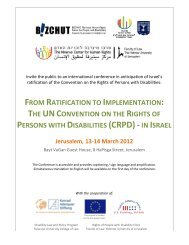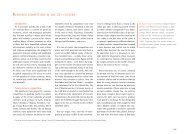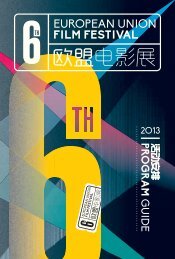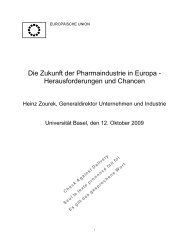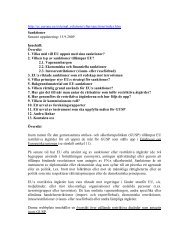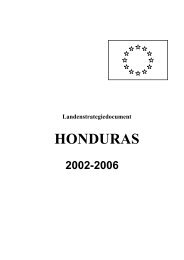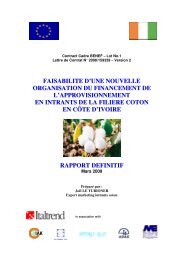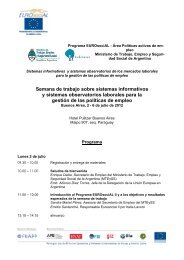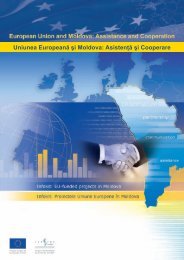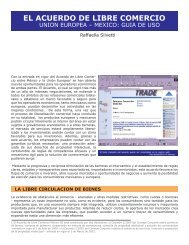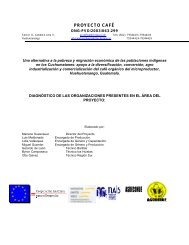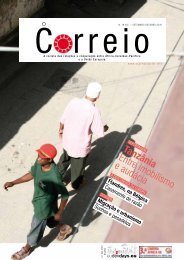Vision Group Report: Invigorating the Indonesia-EU Partnership
Vision Group Report: Invigorating the Indonesia-EU Partnership
Vision Group Report: Invigorating the Indonesia-EU Partnership
You also want an ePaper? Increase the reach of your titles
YUMPU automatically turns print PDFs into web optimized ePapers that Google loves.
76<br />
1. INTRODUCTION<br />
Rules of Origin are used to determine <strong>the</strong> criteria to decide whe<strong>the</strong>r goods were really produced or manufactured in<br />
<strong>the</strong> beneficiary country to which <strong>the</strong> preferential tariff treatment is granted. To be considered as originating in <strong>the</strong><br />
beneficiary country concerned and thus to be able to benefit from <strong>the</strong> preferential treatment, goods must be wholly<br />
obtained (e.g. grown, mined) <strong>the</strong>re or, where this is not <strong>the</strong> case, have undergone sufficient processing <strong>the</strong>re. The<br />
rules of origin define “sufficient processing” by way of a list of origin criteria that vary from product to product.<br />
2. RULES OF ORIGIN IN FREE TRADE AGREEMENTS<br />
XII RULES OF ORIGIN<br />
Free trade agreements (FTA) should include an agreement on ROO. ROO are used to determine whe<strong>the</strong>r goods<br />
traded between parties qualify for access to <strong>the</strong> tariff under <strong>the</strong> agreement. They are necessary to ensure that <strong>the</strong><br />
benefits reciprocally negotiated under <strong>the</strong> agreement accrue principally to <strong>the</strong> parties to that agreement. Generally,<br />
to qualify for preferential tariff treatment under an FTA, a good must fall into one of three categories.<br />
• The first category covers goods that are wholly obtained – that is, wholly sourced, produced or manufactured<br />
– in <strong>the</strong> territory of <strong>the</strong> FTA parties.<br />
• The second category involves products manufactured in <strong>the</strong> territory of <strong>the</strong> FTA parties entirely from materials<br />
that <strong>the</strong>mselves satisfy a ROO.<br />
• The third category involves products using non-originating materials but produced in such a way as to satisfy<br />
a prescribed ROO.<br />
To qualify for preferential tariff treatment as originating goods on <strong>the</strong> third category, goods must undergo<br />
substantial transformation.<br />
• Change in tariff classification method requires a good, after production, to be classified under a sufficiently<br />
different tariff classification of <strong>the</strong> Harmonized Commodity Description and Coding System from <strong>the</strong><br />
classification of <strong>the</strong> non-originating imported component materials.<br />
• Value added method prescribes a threshold proportion of <strong>the</strong> value of a good that must be derived from<br />
materials and processing within <strong>the</strong> territory of an FTA party.<br />
• Processing method requires specific manufacturing or processing operations to be undertaken in an FTA party’s<br />
territory, such as a chemical reaction.<br />
3. REVISED RULES OF ORIGIN UNDER THE <strong>EU</strong> GSP REGIME<br />
The European Commission on 18 November 2010 adopted a regulation revising rules of origin for products imported<br />
under <strong>the</strong> generalised system of preferences (GSP). This regulation relaxes and simplifies rules and procedures for<br />
developing countries wishing to access <strong>the</strong> <strong>EU</strong>’s preferential trade arrangements, while ensuring <strong>the</strong> necessary<br />
controls are in place to prevent fraud. The new rules of origin apply from 1 January 2011.<br />
The Regulation adopted by <strong>the</strong> Commission today will considerably simplify <strong>the</strong> rules of origin so that <strong>the</strong>y are<br />
easier for developing countries to understand and to comply with. The new rules take into account <strong>the</strong> specificities<br />
of different sectors of production and particular processing requirements, amongst o<strong>the</strong>r things.




